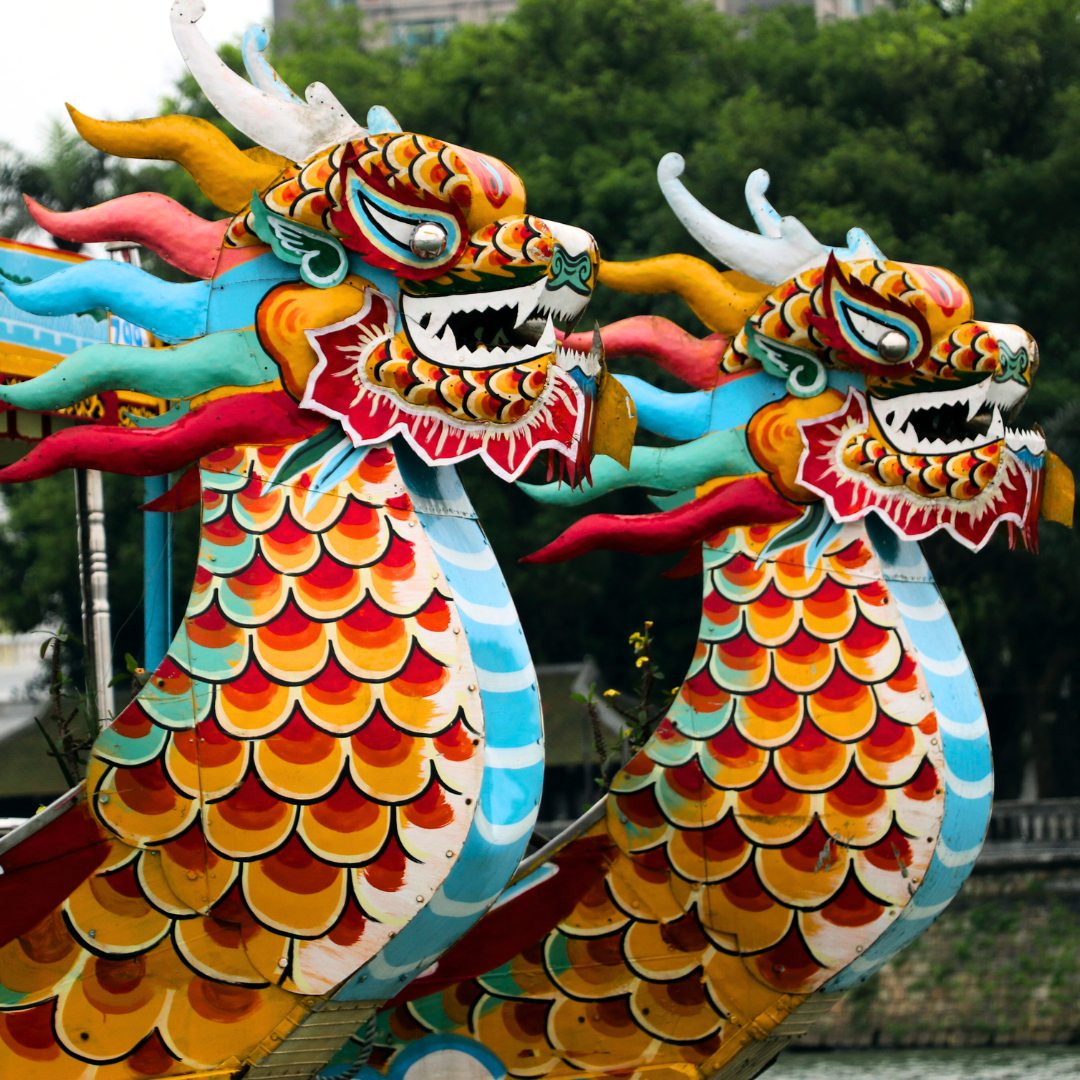Dragon Boat Festivals: Rowing to the Rhythms of Ancient Hong Kong Celebrations

The rhythm of drums, the splash of oars, and the vivid spectacle of intricately carved boats with dragon heads jutting out: this is the iconic scene of Hong Kong’s Dragon Boat Festivals. A tradition rooted in ancient folklore and carried out with zeal in contemporary times, dragon boat racing is more than just a sport; it is a living testament to Hong Kong’s rich cultural tapestry. This article navigates through the heart of this cherished celebration, revealing its origins, present-day manifestations, and what lies ahead for this emblematic event.
The Mythical Origins of Dragon Boat Racing
The history of dragon boat racing is steeped in legend. Most accounts trace back to the ancient Chinese poet and minister, Qu Yuan, who lived during the Warring States period. Heartbroken by the capture and subsequent devastation of his homeland, Chu, by a rival state, Qu Yuan is said to have drowned himself in the Miluo River in despair. Locals, who revered the poet, paddled out in boats to retrieve his body, beating drums and splashing the water with their paddles to prevent fish from eating him and to ward off evil spirits.
Over time, this rescue attempt evolved into a full-fledged festival, celebrated on the fifth day of the fifth lunar month, to commemorate Qu Yuan’s sacrifice. The dragon, a symbol of power, strength, and good fortune in Chinese culture, became emblematic of the boats used in the original rescue mission.
The Spirit of Competition: Teams and Training
Today, dragon boat racing is a fiercely competitive sport, bringing together teams from various regions, backgrounds, and ages. Preparing for the festival often starts months in advance, with teams undergoing rigorous training regimens. Discipline, synchronization, and endurance are crucial, as races can be won or lost by mere milliseconds.
Apart from physical training, teams also engage in team-building activities, fostering camaraderie and unity. After all, dragon boat racing is not just about strength but also about the seamless coordination of each rower, moving in harmony with the rhythm of the boat.
The Beat of the Drum: The Role of Music in Dragon Boat Festival
Music is an integral part of the Dragon Boat Festival. The drum’s rhythmic beats dictate the pace of the rowers, ensuring synchronization. But beyond this functional role, the drumming, combined with cymbals and gongs, creates a stirring atmosphere, capturing the essence of the festival’s spirit and adding to the excitement and drama of the races. The drumbeat is more than just a metronome; it resonates with the heartbeats of participants and spectators alike, pulsating with history, culture, and shared aspirations.
Modern Celebrations: Adapting Ancient Traditions
While the Dragon Boat Festival’s origins are ancient, modern celebrations have adapted to contemporary contexts. Today, the event is as much about cultural appreciation as it is about sporting excellence. Dragon boat races now attract international teams, and the festival has expanded beyond Hong Kong’s shores, celebrated in various parts of the world.
The festival is also a gastronomic delight, with rice dumplings or ‘zongzi’ being a traditional favorite. Wrapped in bamboo or reed leaves, these triangular or rectangular dumplings symbolize the offerings thrown into the river to distract fish from Qu Yuan’s body.
Memorable Dragon Boat Festivals of the Past
Throughout history, certain Dragon Boat Festivals have left an indelible mark. Some were celebrated as acts of defiance during challenging political times, while others have been grand affairs graced by royalty and dignitaries. There have been record-breaking years, where the number of participants and boats soared, and there have been festivals filled with poignant moments, paying tribute to legends of the sport or commemorating significant historical events.
The Craftsmanship: Building a Dragon Boat
Creating a dragon boat is an art in itself. Craftsmen, often with skills passed down through generations, meticulously carve and paint each boat. Made primarily from teak wood, these boats are adorned with intricate designs, with the dragon’s head and tail being particularly ornate. Beyond aesthetics, the boat’s design serves functional purposes, ensuring speed, balance, and stability in water. The process of building a dragon boat can take several months, with each boat reflecting the dedication, craftsmanship, and passion of its creators.
Ensuring the Legacy: The Future of Dragon Boat Racing
While dragon boat racing remains a beloved tradition, it faces challenges, from environmental concerns to the younger generation’s shifting interests. Ensuring the sport’s future requires blending tradition with innovation. Modern boats, while retaining traditional designs, now often incorporate advanced materials for durability. Efforts are also being made to make the sport more inclusive, attracting wider demographics. Educational initiatives, highlighting the festival’s historical and cultural significance, aim to foster deeper connections and ensure its continued relevance.
The Dragon Boat Festival, with its captivating blend of history, sport, music, and community, stands as a pillar of Hong Kong’s cultural heritage. As boats slice through water to the rhythm of pounding drums, they weave tales of ancient legends, shared aspirations, and a collective identity. As we look ahead, the challenge and the opportunity lie in ensuring that this tradition sails into the future, adapting, evolving, and continuing to resonate with generations to come.


